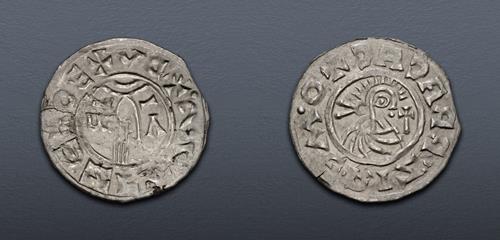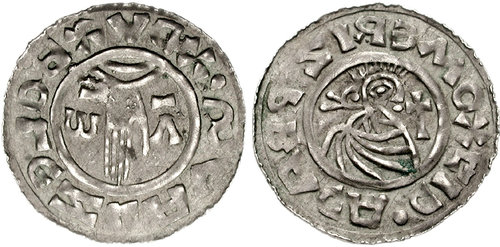Top Tips On Plaster Prague Mint Medals
Wiki Article
How Is A Model Made Of Plaster Converted To Create A Digital 3d Representation For Gold-Plated Coins Or Medals?
This process makes use of specially designed equipment to digitize a maquette and record its dimensions. This digital replica serves many purposes during the production process.
3D Scanning High-resolution scanners record physical dimensions and detail of the plaster model. These scanners use various methods like laser scanning, or structured light, to record precise measurements and geometry.
Surface Information Capture- The scanner projectes light or laser beams at the plaster model's surface. The scanner records any reflections or distortions created by these laser beams, and thus records the surface details of the model.
Data Collection - As the scanner moves over the plaster model it gathers an immense amount of information, creating a digital version of the model’s geometry, contours, and other details.
Conversion into 3D Model- The collected data points are processed by specialized software, which reconstructs the data into a digital 3D model. This model is a replica of the physical and dimension of the plaster maquette.
There are many reasons to create 3D digital models
Precision and Replication Digital 3D models enable precise replication of the physical model's details and dimensions. This accuracy is essential to ensure that gold coins or medals match the original design.
Digital models can be easily modified or improved. Designers can modify the 3D models without altering their original plaster maquette.
Compatibility with Manufacturing Processes- Digital 3D models are compatible with various manufacturing technologies, such as CNC machining or 3D printing, facilitating the production of molds and dies for mass production.
Documentation and Archiving Digital 3D models serve as an archived documentation of the design. Digital models are saved to be used in the future, reproduced or documents from the past.
Designers and producers can make use of modern manufacturing techniques to make gold medals and coins which are exact and faithful to the original designs by scanning models of plaster and creating digital 3D models. View the most popular Scanning and 3D Modeling Prague Mint gold coins site tips. including purchase gold coins, old silver dollars, 1 ounce gold bullion, 1933 double eagle, saint gaudens gold coin, american buffalo coin, american buffalo coin, sacagawea gold dollar, gold medal gymnasts, american gold eagle and more.

How Can Highly-Skilled Engraving Artists Improve The Appearance Of Coins And Gold Medals?
The expertise of highly skilled engravers on the working die or hub is essential to making the design more attractive and better. Their expertise allows them to incorporate intricate details and refine the design. Here's the way they accomplish this Evaluation of Working Hub
The first step is to examine the hub or working die which was created from a master hub or with the help of the Janvier Machine. They evaluate the transfer design's precision, depth and overall quality.
Correction of Imperfections-
Engravers can correct any imperfections or inconsistencies that might be found in the design. They can use precision tools to rectify minor mistakes, adjust the depths, or rework certain elements to ensure uniformity.
Enhancing Details
Skilled engravers create intricate designs using equipment like pneumatic engraving, burins or gravers. They cut or carve into the surface's hub of work to create intricate patterns, letters or patterns.
Depth and Dimensional Enhancement
Engravers modify the lines and the depths of a design in order to create depth and dimension. This is accomplished by varying the depths of the cuts to emphasize particular features or create a texture.
Texture, Finishing and other Additions, Finishings and Texture
The visual appeal of a design can be improved by adding texture or finishing certain areas. Techniques such as stippling, frosting or other types of shading can be used to create different surfaces or effects.
Quality Control and Inspection
Engravers perform regular inspections and checks throughout the engraving process to make sure that the final image meets the standards of precision, clarity and aesthetics.
Collaboration and artistic interpretation-
Engravers frequently work closely with designers or artists to accurately interpret a design. Their creativity and artistic ability can elevate the design by introducing subtle nuance or enhancing details through artistic insight.
Highly skilled engravers are able to manipulate metal surfaces using accuracy and skill. Their attention to detail and meticulous work to detail enhances the appearance of gold coins and medals. This makes sure that the final product is reflective of the aesthetics intended. Read the top Czechoslovakia gold coin engravers site recommendations. including gold coins for sale, 1 10 gold eagle, gold silver dealers, sell gold coins, bullion dealers near me, gold coin with angel on both sides, 2000 olympic, olympic games gold medal, american buffalo coin, 1 oz silver price and more.

How Do You Prepare And Weigh Gold Blanks To Be Used In Minting?
The process of making gold blanks is extremely careful to make sure that the gold coins or medals produced are consistent and exact. Here's the procedure and how it is carried outPreparation Process Gold Material Selection- The most pure gold is selected to create blanks. The gold is typically refined until it is at the required purity standard for coinage.
Gold Blanks are made by using blanking. Blanking involves the cutting of discs and planchets which are the size of coins from gold with specialized machinery.
Precision Weighing & Measuring
Weighing. Each blank is independently weighted to ensure it is in line with the specifications of the coin. This ensures that the medal or coin contains exactly the correct amount of gold.
Measuring - To ensure uniformity to ensure that the diameter, thickness, overall dimensions, and design specifications are observed each piece of paper is measured using precision instruments.
Quality Control and Inspection
Visual Inspection- Each Blank is inspected visually in order to identify surface imperfections.
Rejecting Blanks that Are Not ConformingThe blanks that don't conform to the dimensions, weight or quality standards are rejected in order to maintain consistency and uniformity.
The reasons for preparing
Consistency of Minting Process - The uniformity of the process is guaranteed by accurately weighing and measuring blanks. Consistency in weight and dimensions ensures uniformity in the striking process and produces coins and medals with the same value and quality.
Accurate Gold Content: Each blank is precisely weighed to ensure that the final coin, or medal, contains exactly the amount of gold needed. This guarantees accuracy in both purity and value.
Uniform Blanks - Prevent any variations in size or weight which could impact the coin’s or medal’s value and legality, or its suitability for circulation or commerce.
Quality Assurance- Strict quality control measures during blank preparation ensure that only top-quality, non-defect blanks are used in the minting process, reducing the likelihood of flaws in the final product.
Legal Compliance - The coins are designed to be used for circulation or as commemorative. They must meet the legal requirements in addition to the requirements and standards established by mints or regulators.
It is important to prepare high-quality gold blanks in a uniform method. This ensures that the gold coins or medals created are authentic, valuable, and legal. Have a look at the recommended gold blanks for Prague Mint gold coins website info including order gold coins, purchasing silver bars, one ounce of gold, buy gold bars from bank, mexican gold coins, bullion dealers near me, coin 1, american eagle gold coin, gold buffalo coin, 2000 olympic and more.

What Is The Process By Which Gold Medals And Coins Go Through Quality Control To Ensure They Meet The Specifications??
These checks are carried out to ensure that the coins or medals are in compliance with requirements and also have a precise surface. The quality checks are comprised of many steps.
Inspectors are trained to visually inspect each medal and coin for imperfections on the surface or flaws. They search for scratches, marks, irregularities, or discolorations that may affect the coin's appearance or value.
Weight and Dimensions
Each coin or medal is weighed and measured to make sure it is in compliance with the specifications for dimensions of weight and diameter, thickness, and overall dimensions as per the design specifications. Any deviations might indicate a product issue.
Composition and Purity of Metal
Quality checks involve confirming the gold content and purity of the medals or coins using various testing methods like X-ray fluorescent (XRF) analysis or chemical assays. The gold content is inspected to ensure they meet quality and quantity standards.
Edge Inspection
Inspectors examine the edges to check for any flaws, irregularities and the possibility of reeding. The edges of the coin or medal is an essential location to add security characteristics and design elements.
Strike-Quality
To assure consistency To ensure uniformity, the quality of the strike is analyzed, including the clarity, clarity, and relief of the design elements and the overall appearance.
Minting and proofing mistakes
For special editions or proof coins, a thorough inspection is carried out to determine any flaws, minting errors, or discrepancies that might impact the value of the coin's collectible.
Packaging and Presentation-
The quality test extends to packaging and display and display. It ensures that coins are properly encapsulated and stored in cases or holders.
Random checks and samples
The high quality of the coins is maintained by random sampling and checking throughout the entire process of minting.
Documentation to ensure compliance
Every quality check must be documented in order to ensure compliance with all regulations, certification requirements, and minting standards. These records are proof of the authenticity and quality of the product.
Rejecting non-conforming pieces
Rejecting any medals or coins that aren't up to standards is a good method of ensuring the authenticity and quality of the product.
In conducting these extensive quality checks, mints, and certification bodies assure that gold coins and medals are in compliance with the requirements for purity, accuracy, appearance, and value, reassuring collectors, investors, and customers of their value and authenticity. See the most popular Prague Mint gold medal quality control blog examples. including saint gaudens gold coin, american eagle gold coin 1 oz, 100 grams gold biscuit, american buffalo coin, apmex gold, liberty gold coin, gold coin prices, silver double eagle coin, american gold eagle, gold dollar coin 2000 and more.
